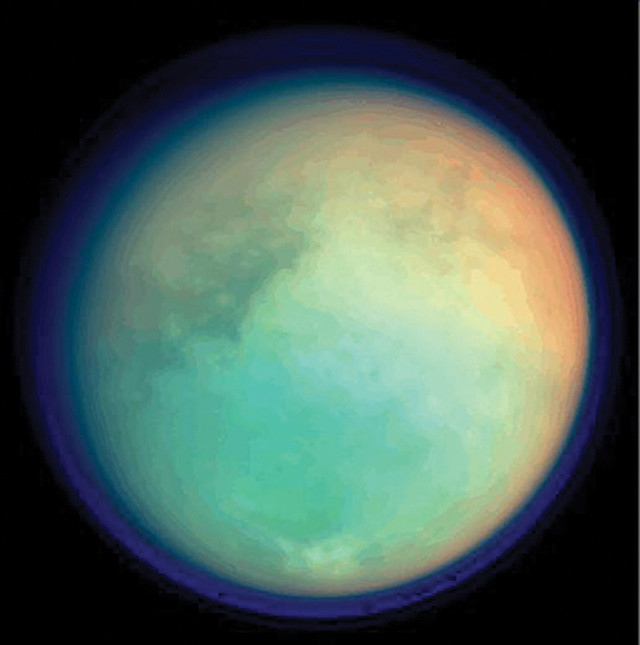
by Lucas Joel Monday, August 24, 2015

Titan in ultraviolet and infrared wavelengths, as imaged by the Cassini spacecraft. Credit: NASA/JPL/Space Science Institute.
Saturn’s largest moon, Titan, has a thick atmosphere composed of 98 percent nitrogen and about 1.4 percent methane, as well as small amounts of other gases. In a new study published in the Journal of Geophysical Research: Space Physics, astronomers have identified fluctuations in methane levels in Titan’s thermosphere that appear to be in tune with the 11-year solar cycle.
Joseph Westlake of the Johns Hopkins University Applied Physics Lab and his colleagues examined data collected between 2004 and 2013 by the Cassini spacecraft, which has been observing Saturn and its moons since 2004. They found an overall upward trend in thermospheric methane levels before 2011, when the solar minimum occurred, followed by a decrease as solar activity began rising again. During solar maximums, sunspots and solar flares — eruptions of radiation from the sun’s surface — reach peak activity. Sunspots and flares emit ultraviolet and X-ray light, which break down methane molecules in Titan’s skies. The methane is then likely irreversibly converted into larger hydrocarbons like acetylene and ethane, Westlake and his team suggested.
Methane destruction happens quickly — over the course of about one Earth month — but it takes about three Earth years for the methane lost to be replenished through upwelling of gas from lower in the atmosphere. “We expect that Titan’s methane will have recovered in the 2015 time frame, [and this will be observable] during the final years of the Cassini mission,” Westlake and his team wrote in the study.
© 2008-2021. All rights reserved. Any copying, redistribution or retransmission of any of the contents of this service without the expressed written permission of the American Geosciences Institute is expressly prohibited. Click here for all copyright requests.